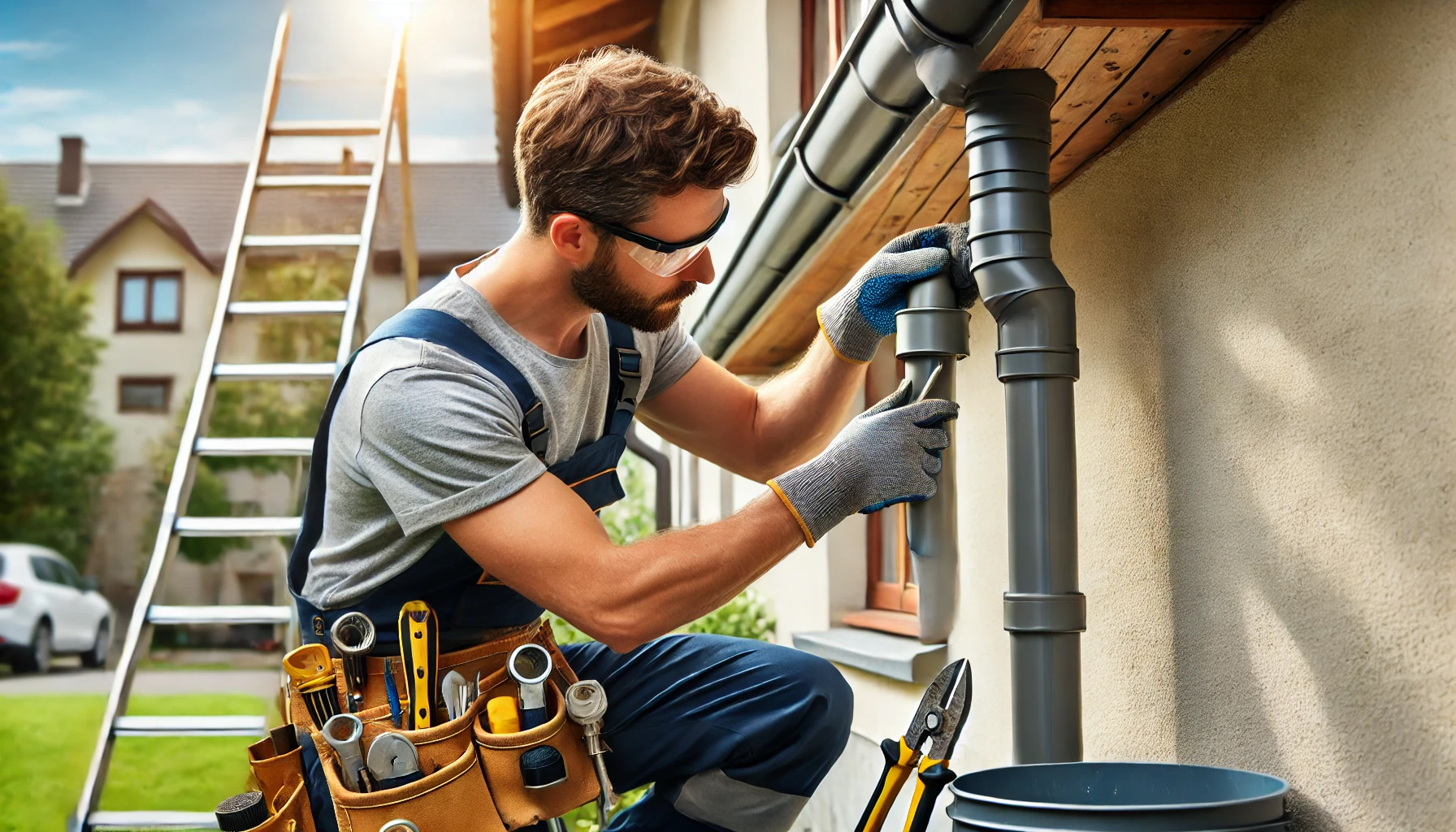WATER DOWN PIPE INSTALLATION

22 Feb WATER DOWN PIPE INSTALLATION
WATER DOWNPIPE INSTALLATION
1. Introduction
- Overview of water downpipe installation and its role in proper rainwater drainage.
- Prevents water pooling, structural damage, and foundation erosion.
- Essential for residential, commercial, and industrial buildings.
2. Importance of Water Downpipes
- Efficient Water Drainage – Directs rainwater away from roofs and foundations.
- Prevents Wall & Structural Damage – Reduces water seepage and mold growth.
- Enhances Gutter System Performance – Ensures smooth flow of rainwater.
- Protects Landscaping & Walkways – Prevents soil erosion and flooding.
3. Types of Downpipes
PVC Downpipes
- Affordable, lightweight, and resistant to corrosion.
- Suitable for residential and light commercial use.
Metal Downpipes (Aluminum, Galvanized Steel, Stainless Steel)
- Durable and long-lasting.
- Best for commercial and industrial buildings.
UPVC (Unplasticized Polyvinyl Chloride) Downpipes
- Stronger and more impact-resistant than standard PVC.
- Ideal for extreme weather conditions.
Copper Downpipes
- Stylish and naturally resistant to corrosion.
- Often used for premium residential and heritage buildings.
Custom Decorative Downpipes
- Designed for aesthetic appeal while ensuring functionality.
4. Installation Services
- Site Inspection & Measurement – Assessing the best locations for downpipes.
- Material Selection & Customization – Choosing the right type based on needs.
- Proper Positioning & Fixing – Ensuring optimal water flow and stability.
- Connection to Gutter & Drainage System – Seamless integration for effective runoff.
- Sealing & Leak Prevention – Ensuring watertight connections.
- Testing & Final Adjustments – Checking flow efficiency and durability.
5. Key Features & Benefits
- Weather-Resistant & Durable Materials – Long-lasting and maintenance-free.
- Smooth & Efficient Water Flow – Prevents blockages and overflows.
- Customizable Designs & Sizes – Matching architectural styles.
- Rust & Corrosion Resistance – Ensuring longevity in all weather conditions.
- Low Maintenance & Easy Cleaning – Minimal upkeep required.
6. Installation Process
- Site Inspection & Consultation – Evaluating the building’s drainage needs.
- Selection of Downpipe Material & Design – Choosing the best type and color.
- Measuring & Cutting Downpipes – Custom fitting for seamless installation.
- Attaching Downpipes to Gutters & Walls – Secure mounting for stability.
- Sealing & Water Testing – Checking for leaks and proper water flow.
- Final Inspection & Maintenance Advice – Ensuring long-term efficiency.
7. Safety & Compliance
- Use of certified, high-quality materials.
- Installation in accordance with building codes & safety standards.
- Warranty on materials and workmanship.
8. Testimonials & Case Studies
- Showcasing successful installations.
- Client reviews highlighting efficiency and reliability.
9. Contact Information
- How to request a free consultation, quotation, or site visit.
- Customer support for maintenance, repairs, and upgrades.




No Comments